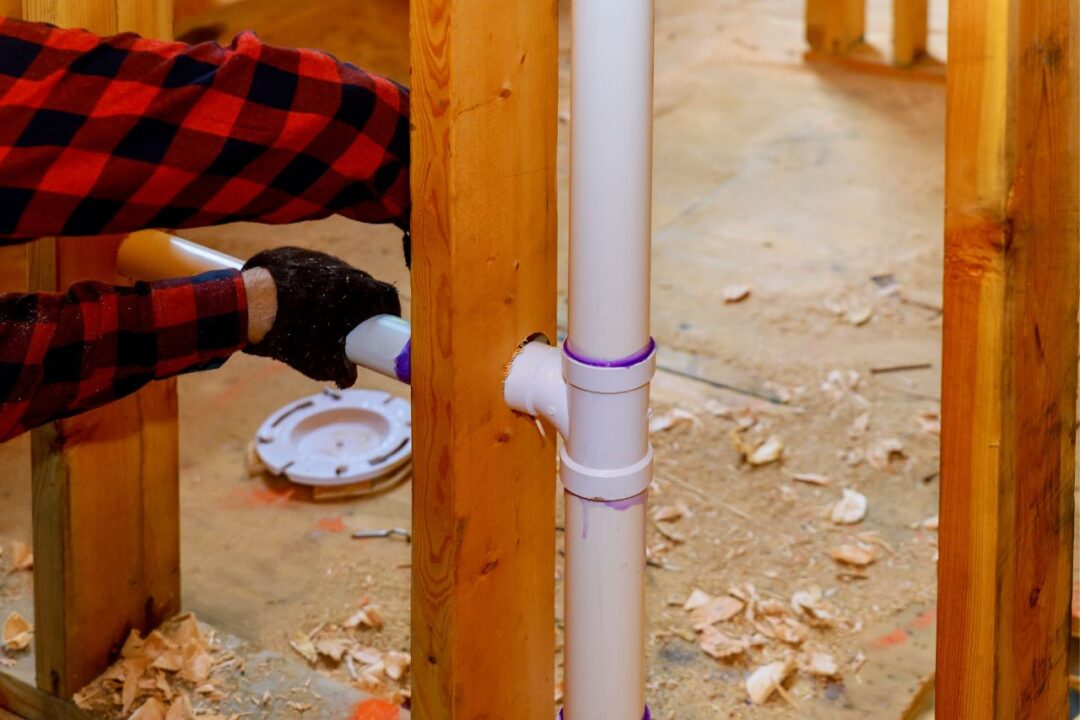Is It Safe to Have Electrical and Plumbing in the Same Wall?
Discover the key to maximizing space without sacrificing functionality or design! In this article, we explore the innovative concept of combining electrical and plumbing systems within the same wall. Traditionally kept separate for safety and convenience, recent advancements make it possible to harmoniously integrate both systems. Learn about the benefits, challenges, and latest trends in this groundbreaking approach to space optimization. Whether you’re a homeowner or a designer, gain valuable insights and expert tips on seamlessly integrating electrical and plumbing systems while maintaining aesthetics and functionality. Unlock your space’s full potential today!
The Challenge of Combining Electrical and Plumbing in the Same Wall

Combining electrical and plumbing systems in the same wall presents a unique challenge in terms of design and installation. Traditionally, these systems have been kept separate to ensure ease of maintenance and to minimize the risk of electrical hazards. However, with the increasing demand for space optimization, architects and designers are exploring new possibilities.
The main challenge lies in ensuring the safety and functionality of both systems. Electrical wiring requires proper insulation and grounding to prevent electrical shocks and fires. On the other hand, plumbing systems require proper sealing and waterproofing to prevent leaks and water damage. Combining these two systems in a single wall requires careful planning and coordination to ensure that the installation meets all safety regulations and standards.
Additionally, the placement of electrical and plumbing components must be carefully considered. The proximity of electrical wires to water pipes can pose a potential risk, and proper measures must be taken to prevent any potential accidents. Furthermore, accessibility for future repairs and maintenance should also be taken into account.
Considerations for Electrical and Plumbing Placement
When combining electrical and plumbing systems in the same wall, it is crucial to consider the placement of both components. Careful planning and coordination are essential to ensure the safety and functionality of the installation.
For electrical components, it is important to follow electrical code regulations and guidelines. Electrical wires should be properly insulated and protected to prevent electrical shocks and fires. The placement of outlets, switches, and light fixtures should be strategically planned to provide convenient access while maintaining safety.
Plumbing components, on the other hand, require proper sealing and waterproofing to prevent leaks and water damage. The placement of pipes, valves, and fixtures should be carefully considered to ensure efficient water flow and easy access for repairs and maintenance.
In addition to the placement of individual components, it is also important to consider the overall layout of the space. Proper coordination between the electrical and plumbing systems can help minimize the risk of conflicts and ensure a seamless integration.
Common Solutions for Combining Electrical and Plumbing in the Same Wall

To overcome the challenges of combining electrical and plumbing systems in the same wall, several common solutions are widely used in the industry. These solutions have been developed to ensure the safety and functionality of the installation while maximizing space optimization.
One common solution is the use of separate conduits for electrical and plumbing systems. This approach involves running electrical wires and plumbing pipes in separate conduits within the same wall. By keeping the systems physically separated, the risk of electrical hazards and water damage can be minimized. This solution provides easy access for repairs and maintenance, as each system can be accessed independently.
Another solution is the use of specialized enclosures or boxes that allow for the integration of electrical and plumbing components. These enclosures are designed to provide proper insulation and protection for both systems. They typically have separate compartments for electrical wires and plumbing pipes, ensuring the safety and functionality of the installation.
Additionally, advancements in technology have led to the development of innovative products that allow for the combination of electrical and plumbing systems in a single unit. For example, some manufacturers offer dual-purpose outlets that include both electrical outlets and water outlets, allowing for the integration of electrical and plumbing systems in a single wall.
Case Studies: Successful Examples of Combining Electrical and Plumbing in the Same Wall
To showcase the possibilities and benefits of combining electrical and plumbing systems in the same wall, let’s explore some successful case studies.
Case Study 1: The Green Residence
The Green Residence is a modern, eco-friendly home that showcases the successful integration of electrical and plumbing systems in the same wall. The design team used separate conduits for electrical wires and plumbing pipes, ensuring the safety and functionality of both systems. The result is a space-efficient home that seamlessly combines aesthetics and functionality.
Case Study 2: The Urban Loft
The Urban Loft is a trendy apartment that demonstrates the use of specialized enclosures for combining electrical and plumbing components. The design team used enclosures with separate compartments for electrical wires and plumbing pipes, ensuring proper insulation and protection. The result is a sleek and functional space that maximizes every inch of available space.
Case Study 3: The Innovative Office Space
The Innovative Office Space is a cutting-edge workplace that utilizes innovative products for combining electrical and plumbing systems. The design team incorporated dual-purpose outlets that include both electrical outlets and water outlets, allowing for a seamless integration of electrical and plumbing components. The result is a flexible and efficient workspace that promotes productivity and creativity.
Potential Risks and Drawbacks of Combining Electrical and Plumbing in the Same Wall
While combining electrical and plumbing systems in the same wall offers numerous benefits, it is important to be aware of the potential risks and drawbacks associated with this approach.
One potential risk is the increased complexity of the installation process. Combining two systems in a single wall requires careful planning and coordination, which can be time-consuming and costly. Additionally, any mistakes or errors in the installation can lead to significant issues down the line, requiring costly repairs and modifications.
Another drawback is the potential for conflicts between the electrical and plumbing systems. Proximity between electrical wires and water pipes can pose a risk of electrical shocks or water damage if not properly addressed. Proper insulation, grounding, and waterproofing measures must be taken to mitigate these risks.
It is also important to consider the accessibility for future repairs and maintenance. Combining electrical and plumbing systems in the same wall can make it more challenging to access and service individual components. Therefore, it is crucial to plan for easy access and ensure that any necessary repairs or maintenance can be conducted without causing extensive damage or disruption.
Hiring Professionals for Electrical and Plumbing Installation

Given the complexity and potential risks involved in combining electrical and plumbing systems in the same wall, it is highly recommended to hire professionals for the installation process. Licensed electricians and plumbers have the expertise and knowledge to ensure the safety and functionality of the installation.
When hiring professionals, it is important to consider their experience and qualifications. Look for professionals who have a proven track record in handling similar projects and who are familiar with the latest industry standards and regulations. Additionally, it is advisable to request references and check their reviews to ensure their reliability and professionalism.
By hiring professionals, you can have peace of mind knowing that your electrical and plumbing systems will be installed correctly and according to the highest standards. They can also provide valuable insights and recommendations based on their expertise, helping you maximize your space while ensuring the safety and functionality of your installation.
Tips for Maximizing Space in Construction Projects
Combining electrical and plumbing systems in the same wall is just one aspect of maximizing space in construction projects. Here are some additional tips to help you make the most of your space:
1. Optimize layout: Carefully plan the layout of your space to maximize efficiency and functionality. Consider the flow of traffic, the placement of furniture and fixtures, and the utilization of vertical space.
2. Utilize built-in storage: Incorporate built-in storage solutions to minimize clutter and maximize space. Custom cabinets, shelves, and drawers can provide ample storage without occupying valuable floor space.
3. Choose multi-functional furniture: Select furniture pieces that serve multiple purposes. For example, a sofa bed can double as a guest bed, or a coffee table with storage compartments can provide additional space for stowing away items.
4. Use mirrors and lighting: Mirrors can create an illusion of space by reflecting light and making the room appear larger. Additionally, well-placed lighting can enhance the overall ambiance and make the space feel more open and inviting.
5. Embrace minimalism: Opt for a minimalist approach to design and decor. Keep only the essentials and avoid unnecessary clutter. This will not only create a more spacious environment but also promote a sense of calm and tranquility.
By implementing these tips, you can maximize the available space in your construction projects, creating a functional and aesthetically pleasing environment.
Conclusion: Achieving a Balance Between Functionality and Space Optimization
In conclusion, combining electrical and plumbing systems in the same wall is a groundbreaking approach to space optimization. While it presents challenges in terms of design and installation, advancements in technology and innovative solutions have made it possible to achieve a seamless integration of both systems.
By carefully considering the placement of electrical and plumbing components, utilizing common solutions, and learning from successful case studies, you can unlock the full potential of your space. However, it is important to be aware of the potential risks and drawbacks associated with this approach and to hire professionals to ensure a safe and functional installation.
By following the tips for maximizing space in construction projects, you can create a space that is not only visually appealing but also highly functional. With the right planning and execution, you can achieve a balance between functionality and space optimization, transforming your space into a truly remarkable environment. So, go ahead and explore the possibilities of combining electrical and plumbing systems in the same wall – the sky is the limit!







